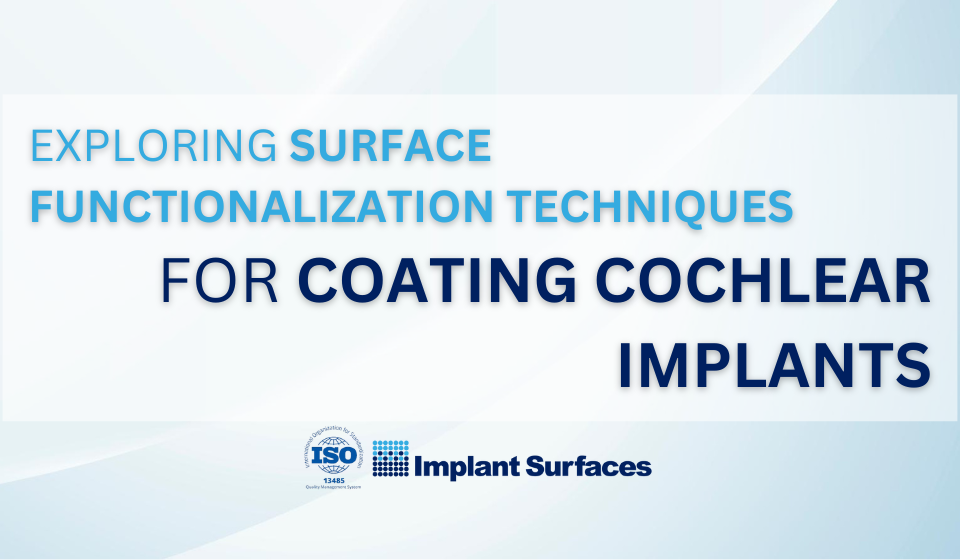
Harnessing Bioactive Coatings: Fueling Angiogenesis in Cardiovascular Stents
May 2, 2024
Role of Surface Wettability in Controlling Cell Adhesion on Implant Surfaces
May 4, 2024In the ever-evolving landscape of orthopedic implant technology, researchers and manufacturers are constantly seeking innovative solutions to improve patient outcomes and enhance implant performance. One such advancement gaining traction is the integration of photocatalytic coatings into orthopedic implants. These coatings, harnessing the power of light, offer a promising avenue for creating self-cleaning surfaces that mitigate the risk of implant-associated infections and promote long-term implant success.
Understanding Photocatalytic Coatings:
Photocatalytic coatings are engineered to exhibit photocatalysis, a phenomenon where light energy activates a chemical reaction on the surface of the material. Typically composed of semiconducting metal oxides such as titanium dioxide (TiO2), these coatings possess the remarkable ability to break down organic contaminants and microbial pathogens upon exposure to light, effectively sterilizing the implant surface.
Mechanism of Action:
The photocatalytic process begins when photons from natural or artificial light sources strike the surface of the coating, exciting electrons within the semiconductor material. These energized electrons interact with oxygen molecules in the surrounding environment, generating reactive oxygen species (ROS) such as superoxide ions and hydroxyl radicals. These ROS exhibit strong oxidative properties, capable of degrading organic substances, disrupting bacterial cell membranes, and neutralizing harmful pathogens.
Benefits for Orthopedic Implants:
The integration of photocatalytic coatings offers several compelling benefits for orthopedic implants. Firstly, by eliminating surface contaminants and microbial biofilms, these coatings help prevent implant-associated infections, a significant complication that can compromise implant stability and patient health. Additionally, the self-cleaning properties of photocatalytic coatings reduce the need for routine maintenance and antimicrobial treatments, streamlining post-operative care and reducing healthcare costs.
Promoting Osseointegration:
Beyond their antimicrobial capabilities, photocatalytic coatings have been shown to promote osseointegration, the process by which bone tissue bonds to the implant surface. Studies have demonstrated that the presence of TiO2-based photocatalytic coatings enhances the adhesion and proliferation of osteoblasts, the bone-forming cells, leading to accelerated bone growth and improved implant stability. This dual functionality makes photocatalytic coatings particularly appealing for orthopedic applications where rapid and robust osseointegration is paramount.
Future Directions and Challenges:
While the potential of photocatalytic coatings in orthopedic implantology is vast, several challenges remain to be addressed. These include optimizing coating durability, ensuring compatibility with implant materials, and fine-tuning the photocatalytic activity to achieve optimal antimicrobial efficacy without compromising biocompatibility. Continued research and development efforts are needed to overcome these hurdles and unlock the full potential of photocatalytic coatings in enhancing the performance and longevity of orthopedic implants.
Conclusion:
In conclusion, photocatalytic coatings represent a groundbreaking innovation in the realm of orthopedic implant technology, offering a multifaceted approach to improving implant safety, functionality, and longevity. By harnessing the power of light-driven chemistry, these coatings have the potential to revolutionize the field, paving the way for safer, more durable orthopedic implants that set new standards for patient care and surgical outcomes. As research advances and technology evolves, photocatalytic coatings are poised to play a pivotal role in shaping the future of orthopedic implantology, driving innovation and enhancing the quality of life for patients worldwide.




